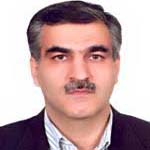Post-Processing of the WRF Output for 10-meter Wind Speed and 2-meter Temperature Using Nonlinear Kalman Filtering Method
Abstract:
IntroductionThe Numerical Weather Prediction (NWP) models usually surface systematic errors in the forecasts of certain meteorological parameters. This drawback is a result not only of the shortcoming in the physical parameterization, but also of the inability of these models to handle successfully sub-grid scale phenomena. In order to reduce the influence of the above mentioned drawbacks in the final output of a NWP model, a variety of approaches based on statistical methods has been used. Most of them are derived from Model Output Statistics (MOS), which are able to account for local effects and seasonal changes. The limitation of this method and the similar ones is the necessity of access to long term data which are not always available. Among the methods that doesn’t need to long term data, Kalman filter is one of the most successful methods to this problem (post-processing) [Azadi et al, 2007; Chochet, 2004; Galanis and Anadranistakis, 2002; Homleid, 1995; Kalman and Bucy, 1961]. In this method, observations are recursively combined with recent forecast using weights that minimize the corresponding biases. The structure of Kalman filter algorithms is more suitable to describe linear procedures. For this reason, their application on meteorological parameters following a non-linear discontinuous behavior is always dubious. The method presented in this study, called, “non-linear Kalman filter” is based on the paper of Galanis et al (2006). Using this method, they investigated the use of non-linear functions in classical Kalman filter algorithms on the improvement of regional weather forecasts. After, application of the non-linear Kalman filter on the WRF model outputs, has been described for obtained an optimum polynomial for improving determination of neighbors’ matrix, neighbors are determined using Mahalanobis distance. Then by a stochastic process, the successive vector is selected for continuation of simulation. In this step, a perturbation subroutine is applied so that, the simulated series posses new values un-experimented variables. The strategic re-sampling technique has a stochastic function which is based on the observed data and it aims to generate new series with attributes defined by the user. This goal is achieved by defining a shape parameter, which enables simulating colder or warmer events or, wet and dry spells. Results and DiscussionBy implementation of the approach on observed data, the shape parameter values zero plus were obtained. As shape parameter becomes one plus, the departure from climatic normals would increase. It was observed that in values of 1 (for temperature series) and 0.85 (for rainfall series) the best results are hit. The successful performance of aforementioned approach is due to acceptable performance of weather generator, which produces the primary simulations. The T-test showed no significant deviation between the monthly mean values especially for mean temperature. Also, the F-test for comparing monthly variances, show some significant differences. Similar results were observed using the 1:1 line. The model performance in generating probability of events was evaluated using Linear Error in Probability Score (LEPS) test, in which the overall skill of model is determined from point skill of events. Good results were obtained based on statistic of the test. Conclusion The new approach of K-Nearest Neighbor was applied for simulation of temperature and rainfall variables in six stations of Iran. The improved model has been shown to be effective in producing precipitation amounts. Perturbation of the observed data points was performed by adding a random component to the values suggested by the basic K-NN model. This approach is philosophically similar to traditional autoregressive models except that the new values are obtained by adding a random component to the individual re-sampled data points. The main advantage of the model introduced here is that unprecedented precipitation amounts can be simulated for any given climate change scenario. Consequently, extremes precipitation, ones can be easily simulated. At present, the model considers changes in both temperature and precipitation simultaneously.
Keywords:
Language:
Persian
Published:
Journal of Climate Research, Volume:1 Issue: 3, 2012
Page:
95
magiran.com/p1031738
دانلود و مطالعه متن این مقاله با یکی از روشهای زیر امکان پذیر است:
اشتراک شخصی
با عضویت و پرداخت آنلاین حق اشتراک یکساله به مبلغ 1,390,000ريال میتوانید 70 عنوان مطلب دانلود کنید!
اشتراک سازمانی
به کتابخانه دانشگاه یا محل کار خود پیشنهاد کنید تا اشتراک سازمانی این پایگاه را برای دسترسی نامحدود همه کاربران به متن مطالب تهیه نمایند!
توجه!
- حق عضویت دریافتی صرف حمایت از نشریات عضو و نگهداری، تکمیل و توسعه مگیران میشود.
- پرداخت حق اشتراک و دانلود مقالات اجازه بازنشر آن در سایر رسانههای چاپی و دیجیتال را به کاربر نمیدهد.
In order to view content subscription is required
Personal subscription
Subscribe magiran.com for 70 € euros via PayPal and download 70 articles during a year.
Organization subscription
Please contact us to subscribe your university or library for unlimited access!


